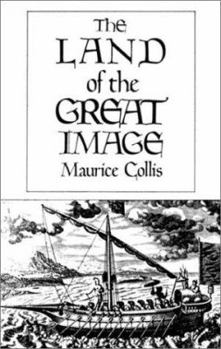Land of the Great Image
Select Format
Select Condition 
Book Overview
A hybrid of history and biography, Maurice Collis's The Land of the Great Image concerns a little-known Portuguese friar abroad in early seventeenth-century Asia. The book chronicles the great diplomatic coup of Friar Manrique's career, opening the kingdom of Arakan, now Burma (land of the "great image" of the Buddha) to the Church and to Portuguese trade, Dispatched from Goa, capital of the now almost forgotten Portuguese empire in Asia, Manrique...
Format:Paperback
Language:English
ISBN:0811209725
ISBN13:9780811209724
Release Date:November 1985
Publisher:New Directions Publishing Corporation
Length:324 Pages
Weight:0.50 lbs.
Dimensions:0.8" x 5.5" x 8.4"
Customer Reviews
2 ratings
Portuguese Father Takes Bit Part in Southeast Asian Politics
Published by Thriftbooks.com User , 21 years ago
No matter what we do, no matter how the tides of world affairs go, some regions of our planet are destined to fall through the cracks, to disappear entirely from the "radar screens" for long periods of time, perhaps many lifetimes. Burma has never loomed large in the West, except for a brief period during WW II, when Anglo-American forces fought the Japanese there. If Burma itself remains a generally-unknown quantity, what to say of the old kingdoms that flourished there for many centuries before being absorbed into the Burmese state---Ava, Pegu, Arakan, and Toungoo ? It is probably safe to say that unless you are a Southeast Asian historian, you have not read any other books on the history of such remote kingdoms, remote in space and time. If you want to start, you have certainly come to the right place. Father Sebastiao Manrique, a Portuguese, kept a very detailed diary of his work and travels in the years 1628-1636. Maurice Collis retells his tale very effectively, with many an aside to explain mores and beliefs of the times. Collis himself worked in the British administration of Burma and so visited a number of places mentioned by Manrique. We start with an excellent description of life and the times in Goa, the center of Portuguese Asia in the 1620s, then move on through an exciting voyage and shipwreck, to the `unofficial' Portuguese colony near modern Calcutta, and to a pirate/slave-raider island off the coast of modern Bangladesh. These slavers were aligned with the Buddhist monarch of Arakan, then a powerful kingdom along the Bay of Bengal, but they remained a powerful force of their own, thanks to their European arms and ships. Fearing an attack while most of their number were off kidnapping more Bengali slaves, the slavers sent Father Manrique on an emergency mission to the court of Arakan to assure the king of their loyalty. Braving tigers, floods, hungry hordes of ants, and much else, Manrique arrived at Mrauk-u, the capital and saved the day for the dear Portuguese slavers. He remained in the region for nearly eight years, observer of all the glories and horrors of the royal court---coronations, mass murders, royal audiences, elephant parades, magic.THE LAND OF THE GREAT IMAGE is a travel book, but it is also history, anthropology, a minor study of megalomania, and a book much connected to the study of comparative religion. Manrique was a bigoted man, who condemned the "paganism" in the religions of the East while excusing his own support of slavery and the Inquisition. Collis' attitudes too form part of the debates which his book may raise in the minds of readers. His comparison of bizarre Hindu rituals of "suicide by shark" with the burnings of the Inquisition seem extremely shortsighted in my eyes, yet I sense that the author was a sensitive, clever man. All in all, this volume will open your eyes in many directions, provide fascinating reading for a few days, and make you wonder, yet again, at the unbelievable v
Among the Arakanese
Published by Thriftbooks.com User , 23 years ago
In the early 17th Century Friar Manrique set out from the Portuguese enclave in what is now Bangladesh to explore the fable borderland of Arakan. Based on contemporary accounts, author Maurice Collis, a former British colonial administrator who served himself in the region, tells the harrowing story of a missionary's adventures among hostile natives, pirates, Portuguese colonists and his Buddhist counterparts at the Arakanese court. The title of the book refers to a sacred, golden statue of the Lord Buddha, which was the center of a cult of veneration in Mrauk-U, the capital of Arakan.A very knowledgeable historian and talent story-teller, Collis places the friar's tale in its historical setting, touching upon Portuguese imperialism, the spread of Buddhism and the history of the sacred image itself.Originally published in 1943 it is a good thing that this excellent work has been re-issued.





